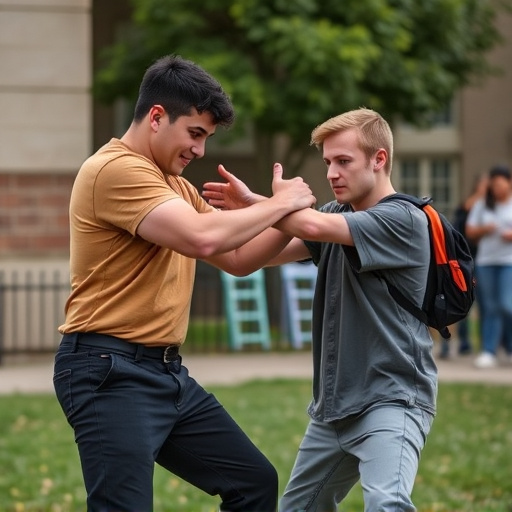College students face unique safety challenges, including a lack of life skills, anonymous campus environments, and social pressures. With the addition of online threats and cyberbullying in the digital age, self-defense has become more critical than ever. Empowering students involves learning martial arts techniques, awareness, preparation, and communication skills. Utilizing campus resources, such as workshops and peer support networks, along with continuous training, ensures students are equipped to handle various threats, both physical and online, enhancing their safety and well-being.
In today’s digital era, self-defense for college students is more than just a physical skill—it’s an essential tool for navigating the unique challenges of campus life. Understanding the specific risks and developing effective strategies can empower students to protect themselves in everyday situations. This article explores essential self-defense techniques, leverages campus resources, and emphasizes continuous learning and practice to ensure students stay safe while embracing their college experience.
Understanding the Unique Challenges of College Students' Safety
College students often face unique challenges when it comes to their safety. With many living away from home for the first time, they may lack the life skills and experience needed to navigate potentially dangerous situations. The anonymity of campus environments, coupled with social pressures, can make self-defense an overlooked yet critical aspect of student life.
In the digital age, online threats and cyberbullying add another layer of complexity. Students need to be equipped not only with physical self-defense skills but also with awareness and prevention strategies for online risks. Understanding these challenges is the first step towards empowering college students to take control of their safety and well-being.
Essential Self-Defense Techniques for Everyday Situations
For college students, navigating new environments and encountering unknown situations can make self-defense a pressing concern. While it’s impossible to predict every scenario, learning some foundational self-defense techniques empowers individuals to protect themselves and build confidence. Basic strikes, blocks, and escapes taught in martial arts like karate or jiu-jitsu offer practical tools for de-escalating potential threats and gaining time to react. Understanding personal space, body language, and risk assessment are also crucial components of everyday self-defense, allowing students to anticipate and avoid dangerous situations before they escalate.
Beyond physical skills, awareness and preparation play significant roles in self-defense. College students should familiarize themselves with campus security protocols, emergency contact numbers, and safe routing. Carrying a personal alarm or pepper spray can serve as a deterrent and provide an extra layer of protection. Moreover, developing strong communication skills and assertive body language can help students confidently navigate potentially dangerous situations, deterring would-be assailants before they approach.
Utilizing Campus Resources and Support Networks
For college students looking to enhance their safety, utilizing campus resources and support networks is a crucial step in learning effective self-defense strategies tailored to their unique environment. Many universities offer specialized programs focused on student safety, including workshops, seminars, and training sessions dedicated to teaching practical self-defense techniques. These initiatives often involve experienced instructors who can provide guidance on navigating potential threats common on campus, such as crowded hallways, isolated areas, or late-night walks.
Campus resources extend beyond formal programming. Students can also tap into peer support networks, where fellow students share their experiences and knowledge about staying safe on campus. Utilizing these built-in support systems can foster a sense of community and empower individuals to take proactive measures for their well-being. By combining formal training with peer mentorship, college students gain valuable insights and skills to protect themselves in various scenarios, making them better equipped to face the challenges of self-defense in a college setting.
Staying Prepared: Continuous Learning and Practice
Staying Prepared involves continuous learning and practice in self-defense for college students. Regular training sessions are essential to ensure that what you learn in a classroom setting translates effectively into real-life situations. This ongoing education helps to reinforce techniques, build muscle memory, and improve overall confidence.
College students should aim to incorporate self-defense into their daily routines, whether through formal classes or informal practice with peers. Staying alert and aware of surroundings becomes second nature when coupled with consistent training. This preparation can significantly enhance a student’s ability to defend themselves not just in hypothetical scenarios but in the event of an actual emergency.
